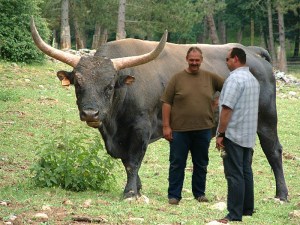Lost In Translation
By Timothy S. Wilkinson
http://www.timothywilkinson.net
Most of us have grown up making silent excuses for the way the Bible is written. It sounds quaint, simplistic, redundant—even childish at times. This must be because it was written “a long time ago,” we tell ourselves. All of the prose in the Hebrew/Aramaic Scriptures (or Old Testament) is a violation of the most basic rule of good writing: show, don’t tell. Sentences are always beginning with “and” or “thus,” which our English teachers taught us never to do. Run-on sentences, laundry lists of names or places, statements of the obvious, and a small vocabulary—all of this and more incline us to read the Bible as though it were written by an ignorant people from an unenlightened time.
The reality, though, is that it is we who are ignorant. The problem lies not in the writing, but in the translation and in our reading.
Translation is always a tricky endeavor. An internet search for “engrish” will provide a plethora of examples. To illustrate the point, though, imagine trying to translate the following with no comprehension of idioms.
“Yo! Johnny! What’s the word?”
“You’ve got nerve showing up here. How’d you track me down?”
“A little bird told me you’d be here.”
“What—did my lawyer give me up?”
“That ambulance chaser? You’re nuts. Why do you want a lawyer to thrown a monkey wrench in the works?”
“Yeah, OK. I’m just trying to stay ahead of the curve here, you get my drift?”
“Well, the tables have turned. Let’s talk turkey.”
“Yeah? And I get immunity?”
“That ship has sailed.”
“Of course. And the DA shows her true colors. That apple doesn’t fall far from the tree.”
“You leave her old man out of this. He was a good egg and you know it.”
“I don’t deserve this.”
“That’s just the way the cookie crumbles.”
A translation would likely end up sounding like this:
“Hello, Johnny. What is the word?”
“You have nerves appearing in this place. How did you follow me down?
“A small bird informed me that you would be here.”
“Did my attorney provide me with up?”
“He chases emergency vehicles? You are snack foods. Why do you want an attorney to hurl a monkey’s tool into the moving parts?”
“Yes, Yes. I am just trying to remain in front of the curvature that is here. Do you receive my coast?
“Well, the furniture has rotated. Let us speak in the language of turkeys.”
“Yes? And I will be protected from the disease?”
“That boat has already headed to sea.”
“Of the route. And the Da exposes the real tints that she owns. A piece of fruit lands on the ground near the trunk.”
“You should leave the elderly gentleman belonging to her outside. He was an egg that was satisfactory, which you know.”
“I do not deserve this.”
“That is how the baked good breaks apart.”
We should notice two things about this translation. First—idioms do not lend themselves well to translation. It’s not just a matter of the meaning not coming across clearly. Of equal importance is the fact that the personality of the speakers, their tone, attitude, background and a host of other details about them disappear in the translated version. We have no trouble picturing the speakers in the first exchange—in fact, you might have even envisioned where they lived, what time period they lived in, what social strata they belonged to, etc. All that information came, not from their words, but from the types of words they chose. And all of that information is, literally, lost in translation.
The second thing we should notice is that the translation turns both speakers into idiots. When their speech is not nonsensical, it is ignorant or juvenile. If we read the translation without the benefit of the original, we would assume these were simpletons (perhaps with serious head injuries).
This is precisely what happens when we read the Bible. Ancient Hebrew is a language of idioms. Even the best translation of this sort of idiomatic speech fails to convey anything accurate about the speakers. It makes them sound like ignorant simpletons.
The reality is that many Bible writers were truly brilliant. My favorites, the prophet Samuel and his successor Nathan, crafted a history with layers of intricacy, symbolism, subtextual themes and ideologies that rivals the very best poetry and prose at any time in history. I think that sometimes, in our determination to establish the authenticity (and/or divine origin) of their accounts, we downplay the role that these men played as writers, and the skill with which they practiced their craft. In the following blog posts, I hope to illustrate this skill in a way that reveals the genius of these writers that is all too often buried by the sincere efforts of translators whose work is science, and not art.
